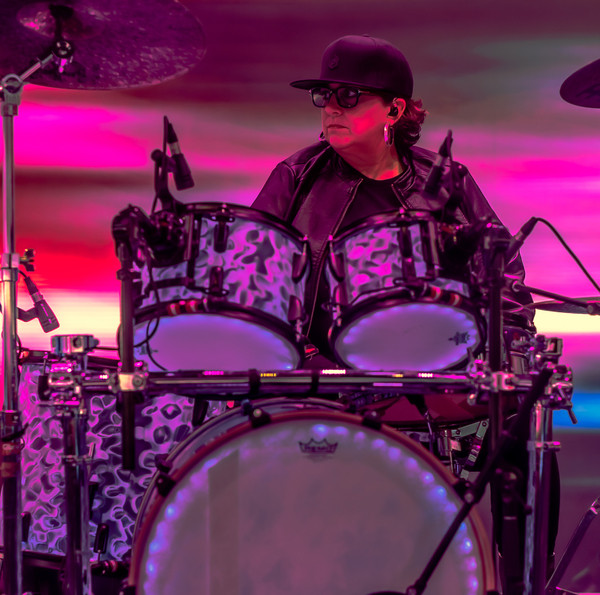Most good electronic musicians are sonically adventurous. Some manage to be sonically disruptive. But very few are true sonic rebels. Rebellion requires imagination. Rebellion isn’t an accidental act: it’s a well-considered protest against the way things are, done on behalf of the way things could be. Tammy Hurt, for instance, has no time for the stratifications and restrictions of genre. With Sonic Rebel, her one-woman project, the Atlanta percussionist throws open all of the windows. She juxtaposes house with hip-hop, modern pop with electrosoul, progressive rock with music that sounds like it could have scored a late ’80s video game. Everything goes into the pressure cooker. And when Hurt sits down at the drums, she really turns up the heat.
As is true for so many of the most effective rebels, her mastery of the rules makes her so good at breaking them. Tammy Hurt has been an in-demand live drummer for years; she’s worked with the Indigo Girls, Van Hunt, members of Grouplove, Brendan O’Brien, Nick DiDia, and many other noteworthy music creators. She knows how to lay down an irresistible beat for a folk-rock or pop-soul traditionalist. But in quarantine, physically isolated from other musicians, she was seized by the will to experiment — and she pushed herself to explore uncharted territories. Left alone, with nothing to restrict her imagination or even guide her hand, her sonic rebellion grew in ferocity and fearlessness. With the sense of irony and purpose that informs all of her work, she called her collection of fevered experiments We Made This With Our Hands. The project won her acclaim, respect from her past collaborators, and the front page of the Atlanta version of Creative Loafing.
It also drew the attention of other rebels. Recordings like those on We Made This With Our Hands invite constant reinterpretation, and Tammy Hurt has enlisted one of the best in the business to transform the lush, 808-spiked “This Vibe.” Tyler Stone is a pioneer herself: she was one of the first female artists to distinguish herself as a house music producer, and she remains a master of the style. Her mix of “This Vibe” pulls an already kinetic song closer to the club floor and bathes the track in dreamlike radiance. That transformation is reinforced by the clip for “This Vibe,” a hypnotic wash of shifting, pulsing, enveloping, compulsively watchable colors and shapes. LazerShark’s video evokes the feel of vintage VHS, the danger of computer glitches, and the lure of the digital future. From within the dance of pixels, patterns seem to emerge: faces, bodies, tunnels, and starry skies are all suggested. Is that intentional, or is it just the heady hallucination that always accompanies a successful rebellion?

